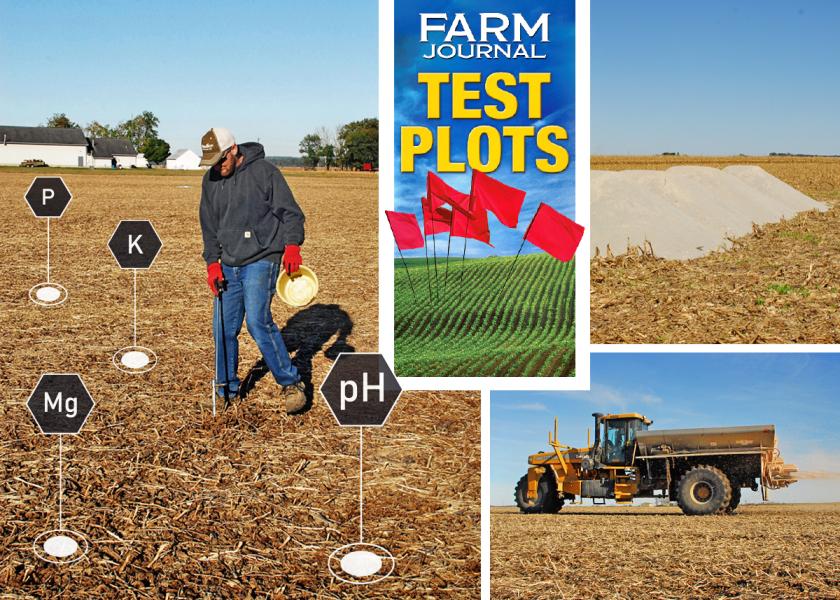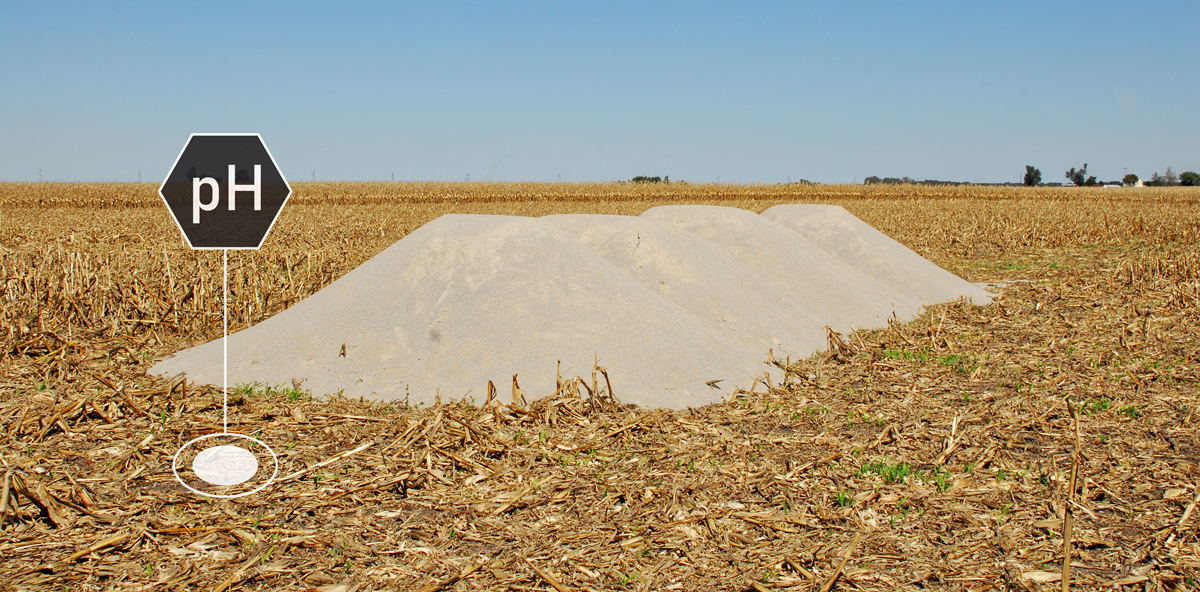Nutrients Where Needed: How to Prep Your Soil Fertility for a Vertical System

In some vertical farming systems, such as no-till and strip-till, you will no longer mix nutrients deep into the soil profile with horizontal tillage. Much like you addressed soil density by removing layers, you’ll want to balance fertility throughout the rooting zone before transitioning to a vertical farming system.
Once you balance fertility and pH in the soil profile, and adjust to making small, more frequent applications of lime, you probably won’t need to mix fertilizer into the soil, says Farm Journal field agronomist Ken Ferrie.
But won’t nutrients stratify?
“When you reduce tillage, you get stratification of some nutrients, especially non-mobile nutrients, such as phosphorus, in the top 3",” Ferrie says. “In the second 3" to 6" we have documented little change in fertility levels over time, thanks to biochannels, earthworms, nightcrawlers and natural leaching. Some of our clients’ farms carry the same nutrient levels at the 3" to 6" depth as they did 30 years ago when they were converted to no-till.”
Although farmers worry about it, stratification near the surface usually is a good thing, Ferrie adds.
“Stratification actually is a form of banding, which increases nutrient efficiency,” he explains. “Most nutrient feeding happens in the top 6" of soil, and the largest portion is in the top 3". The presence of oxygen makes that the most biologically active portion of the soil, where aerobic organisms recycle and release nutrients for the crop. You don’t have that activity at lower levels because there’s much less oxygen; so even if nutrients are present, they might not be available for plants.”
Think about it: aerobic activity in the top few inches of soil is the reason wooden fence posts rot 3" or 4" below the surface.
A well-prepared vertical system carries its own drought-proofing, Ferrie notes. “If soil dries out at the surface, the oxygen-rich layer moves downward and roots feed at the 3" to 6" depth. So you want fertility at that level to be in good shape before you stop tilling.”
Ready your soil to go vertical
Here’s how to make sure your soil is ready to transition to a vertical system:
Review your current program. “If you regularly test soil and maintain balanced fertility levels, you might need only tweaks to your 4R program (right product, rate, time and placement) to enter a vertical system,” Ferrie says.
Test soil. “If you are in a conventional tillage system where fertilizer is routinely mixed through the soil profile, you need a regular 6" soil test,” Ferrie says. “Make sure the top 6" are in a good balanced condition.”
Already no-till? “If you acquire ground that has been no-tilled, but you aren’t sure if nutrients were balanced before going to no-till, test the soil at zero to 3" and 3" to 6" levels,” Ferrie says. “Expect stratification at the zero to 3" depth, especially with pH. If the 3" to 6" level is low in phosphorus and potassium, fixing that issue will weatherproof the field. Either till for a few years to mix fertility downward or use a strip-till bar that applies fertilizer, moving the strips each year until the problem is fixed.”

Your Biggest Challenge: Managing Acidity
“Whether you farm vertically or horizontally, pH is a bigger factor in soil health than any other input,” explains Ken Ferrie, Farm Journal field agronomist.
“If soil pH is balanced when you stop horizontal tillage and move into a vertical system, switch from applying lime every three or four years to smaller amounts every year or two,” he continues. “Lime will move downward about ½" per year, depending on the porosity of the soil. Some of our clients have maintained balanced pH through the top 6" of soil after 30 years in no-till.”
Here are some tips to maintain a healthy pH in your vertical system:
- Adjust lime rates to the amount of tillage you will be doing. “If the recommendation is 3 tons per acre for a 6" slice of soil, but you only work it 3" deep, that’s like a 6-ton application in the top 3",” Ferrie says. “If you spread 3 tons of lime on the surface of a no-till field, that’s more like an 8-ton application. It will drive the surface pH to the upper-7 range, leading to nutrient tie-up, herbicide carryover and nitrogen volatility.”
- Apply lime like paint — uniform applications that can be worked in or leached down by water. “You can’t strip lime like phosphorus or potassium,” Ferrie says. “Think of hydrogen ions like weed seeds, scattered in the soil, and apply lime uniformly like a herbicide.”
- If soil is highly acidic, apply lime over time, mixing it through the profile with a ripper or chisel. Then return to your vertical system.
- Since most acidity develops near the surface, where biological activity takes place and nutrients are applied, a proactive liming program lets you neutralize the acidity before it moves deeper into the soil. Maintain pH with frequent lime applications of 1,000 lb. to 2,500 lb. per acre, and test soil every year or two.
- In corn/soybean rotations, apply lime in the fall on cornstalks, before going to soybeans. “This allows time for the lime to be carried into the soil before you make a surface application of nitrogen and run into volatility issues,” Ferrie says.
- If you must apply nitrogen on the surface after a lime application, protect it with a nitrification inhibitor.
Want to read more from Ken Ferrie about vertical farming?
Now's the Time to Transition to a Vertical Farming System
Do You Have Soil Compaction and Density Changes That Impede Roots and Water? Here’s How to Find Out
Shatter Your Yield Barriers One Layer At A Time







